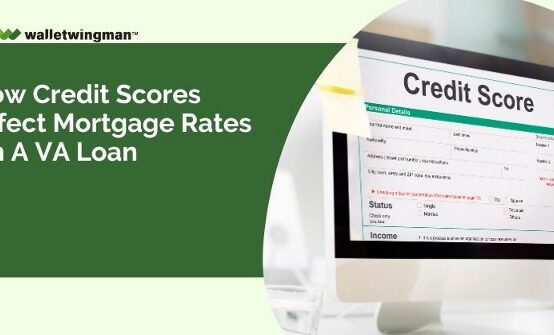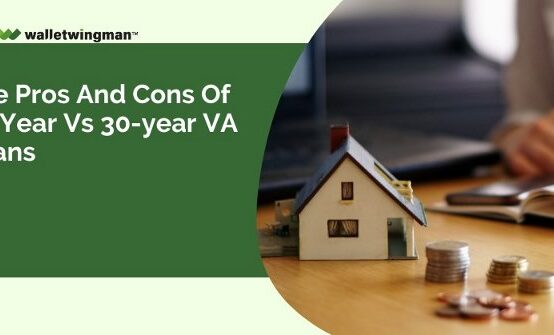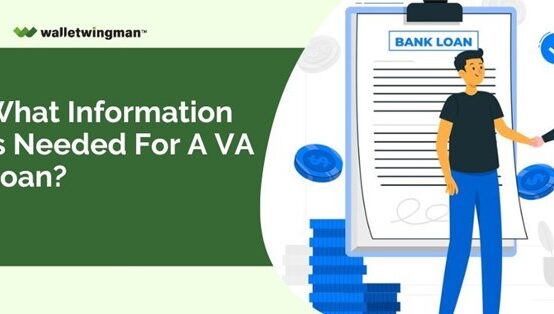Many veterans or military members interested in owning a property tend to have many unsolved questions regarding the legibility and complexities of VA loan approval.
Therefore, this comprehensive guide is going to explore the minimum VA loan requirements for borrowers in 2024.
Summary of VA Loan Requirements in 2024

One of the simplest mortgage loans to get is a VA loan. You must first comprehend the layout of this program in order to understand why.
VA loans are a type of government-backed mortgage. The Department of Veterans Affairs backs them, and commercial lenders offer them. In essence, the VA protects the lender against losses if the borrower defaults by guaranteeing a portion of the loan amount.
With this guarantee in place, lenders may provide VA loans with better terms, such as reduced interest rates and no down payment needed.
You can easily qualify and apply for funding if you meet the requirements listed below for VA loan eligibility, have an adequate income, and have manageable debt. The most important prerequisites for the VA loan underwriting process are listed below.
So let’s explore them in detail:
1. General Eligibility Requirements
The VA loan program is limited to military members, veterans, and certain qualifying spouses. This program essentially rewards military folks for their service by giving them an easier path toward homeownership.
To qualify for a VA loan, you need to meet the following real estate VA loan eligibility criteria:
- Active-duty Service: You must serve at least 90 days during a war or 181 days during peacetime.
- National Guard or Reserve Service: You must have served in the National Guard or Reserves for at least six years or 90 days of active duty under Title 32 orders, 30 of those days consecutive.
- Surviving Spouse: You must be the spouse of a military person who died on active duty or due to a service-related disability.
This is a basic overview of the minimum eligibility requirements for VA home loans. For more information on basic program eligibility, you can refer to the VA.gov website.
2. Certificate of Eligibility
The Certificate of Eligibility (COE) is one of the crucial VA loan documents required for the VA loan approval process in 2024. You cannot apply for one until you have received this paperwork.
Your eligibility for the program and your military service are verified by the COE. The Department of Veterans Affairs issues these documents after validating your military record and, if appropriate, your discharge papers.
You can apply for a COE online, via mail, or in person at a VA regional office. Your mortgage lender can also request the Certificate of Eligibility on your behalf. In any case, you’ll need this paper to continue with the procedure.
Some of the other documents that you should readily prepare for VA loan pre-qualification are:
- Identity Verification: This paperwork is necessary when applying for a VA mortgage.
- Income Verification: W-2 documents, pay stubs, and tax returns can help determine your financial stability and ability to repay the loan.
- DD-214 Form: A DD-214 Form, also known as a Certificate of Release or Discharge from Active Duty, is a document you obtain after leaving the military.
- Bank Statements: Lenders need to know your monthly spending habits; therefore, you will be required to provide bank statements.
- Credit Report: VA loan lenders utilize this document to evaluate your credit history, which affects loan approval and interest rates.

3. Funding Fees
The funding fee is one of the standard VA loan requirements for VA-backed mortgage loans in 2024. With a few exceptions, all borrowers who use the program have to pay this fee.
The VA funding fee is a one-time charge paid to the Department of Veterans Affairs by people who utilize a VA loan to purchase or refinance a home. This fee helps to offset the costs of this program and minimize the burden on taxpayers.
The funding fee requirement for VA loans also enables you to avoid paying mortgage insurance, which is usually required with a low (or no) down payment.
Funding fees typically range from 0.5% to 3.3% of the loan amount. It can vary due to several factors, including the type of loan, down payment amount, and whether the borrower has used a VA loan. It can be paid prior to closing or rolled into the loan amount.
Some borrowers are exempt from paying the funding fee. For example, borrowers who receive disability compensation for a service-connected disability can be exempt from paying it.
Learn more about the VA funding fee
4. Credit Scores and Debt Ratios
Mortgage lenders use credit scores to determine how a person has borrowed and repaid money in the past and to measure the risk associated with lending to them. This is true for VA and conventional home loans alike.
In 2024, the Department of Veterans Affairs won’t require a particular credit score for VA loans. Instead, they leave it up to the mortgage lender.
Your credit score and debt ratio are the most important aspects that can affect your VA loan closing process.
Lenders normally anticipate seeing a credit score of 600 or higher for VA loan applicants, but that’s not set in stone. A borrower with a poor credit score can still qualify for the program if they have other compensating factors.
Moreover, the amount that lenders can charge to originate and process these loans is capped by the government. In addition, sellers may cover up to 4% in concessions and all of the closing expenses associated with the buyer’s financing.
Concessions can be used to pay off a borrower’s collections or judgments prior to closing, as well as a variety of additional expenses. They can also be used to prepay homeowners insurance and property taxes.
For a better understanding of the debt ratio, you need to thoroughly understand the complexities of the debt-to-income ratio.
Your debt-to-income ratio (DTI) is the percentage of the gross monthly income that contributes towards paying your monthly debt obligations. In order to calculate DTI, you need to divide your total monthly debt payments and your gross monthly income and multiply by 100.
Lenders and the VA use this DTI to assess your ability to afford a mortgage payment. A lower DTI ratio can indicate that you possess more disposable income to cover your monthly mortgage payment and other expenses.
Moreover, DTI ratios are sub-divided into two categories:
- Front-end DTI Ratio (a.k.a., “housing ratio” ): The percentage of a borrower’s gross monthly income that goes towards housing-related expenses, including mortgage payments, property taxes, and homeowners insurance.
- Back-end DTI Ratio: The percentage of a borrower’s gross monthly income that covers all monthly debt obligations, including housing-related expenses, credit card payments, student loan payments, and auto loan payments.

5. Income Requirements for VA Loans
Lenders strictly evaluate your income to ensure you can afford the loan payments. A stable income is necessary to qualify for a VA-backed mortgage loan, along with a manageable level of debt.
To measure this, lenders use what’s known as the debt-to-income ratio (DTI).
This is one area where the Department of Veterans Affairs actually does have specific requirements for VA loans. But they also allow lenders to make exceptions based on compensating factors.
As explained in a previous article, mortgage lenders must take a closer look at applicants who have a DTI ratio above 41%. That doesn’t mean you’re automatically disqualified above that threshold. It simply means that the underwriter must give extra scrutiny to the application.
The most important thing is that you have a stable and sufficient income to manage your monthly mortgage payments and all other recurring debts.

6. No Down Payment in Most Cases
In most circumstances, VA loans do not demand a down payment. You can utilize this method to buy a property while financing the 100% purchase price. This eliminates the need to save for a down payment, a significant advantage over alternative mortgage options.
However, in very rare situations, a borrower may be required to put money down when obtaining a VA loan. If you have “remaining entitlement” (for example, if you previously utilized a VA loan and still own the house), you may be required to make a down payment if you borrow more than your county’s conforming loan maximum.
However, the great majority of borrowers who use this scheme have no down payment.
7. Minimum Property Requirements
In addition to creating VA loan standards for applicants, the Department of Veterans Affairs has guidelines pertaining to the property being purchased. Any home bought using the VA loan application process must be safe and habitable for the occupant, with no health or safety risks.
When you utilize this program to purchase a home, it must be evaluated by a VA-approved appraiser. The appraiser will assess the current market value of the property while also confirming that it fulfills the basic property standards listed above.
The home you purchase must also be your principal residence. The VA loan program is not intended for purchasing secondary investment properties.
Note: This article covers some of the minimum requirements for VA loans in 2024. It is intended for a general audience and might not apply to all scenarios. As a borrower, you could encounter additional loan requirements not mentioned above.


 How to Buy a Condo Unit with a VA Mortgage Loan
How to Buy a Condo Unit with a VA Mortgage Loan  How Credit Scores Affect Mortgage Rates on a VA Loan
How Credit Scores Affect Mortgage Rates on a VA Loan  How Much Can I Borrow When Using a VA Loan to Buy a House?
How Much Can I Borrow When Using a VA Loan to Buy a House?  The Pros and Cons of 15-Year vs 30-year VA loans
The Pros and Cons of 15-Year vs 30-year VA loans  10 Important Quotes from the Official VA Loan Buyer’s Guide
10 Important Quotes from the Official VA Loan Buyer’s Guide  What Information Is Needed for a VA Loan?
What Information Is Needed for a VA Loan? 